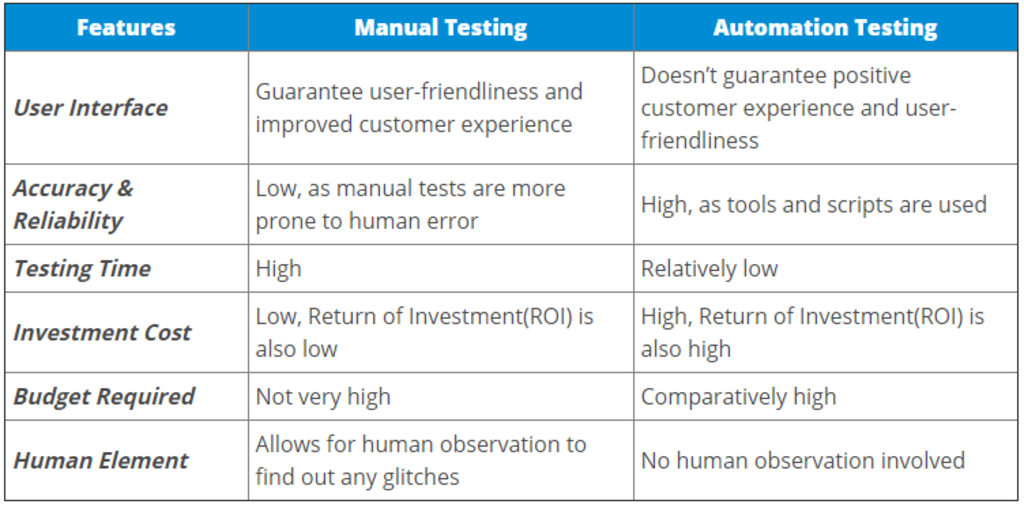Manual Testing Complete Guide
Every software project has three crucial aspects, that are cost, time and quality. This is achieved by testing software regularly. Software Testing is an integral part of any IT project. The software is tested to detect bugs and find issues that may negatively affect the user experience. Testing is broadly classified as manual testing and automation testing. Through this “What is Manual Testing?” article, we will learn about manual testing.

Go through this Selenium online training to get a clear understanding of Manual Testing!
Let’s take a look at topics covered in this article:
What is Manual Testing?
Manual Testing is the practice of testing an application manually to find defects and bugs. Test cases are executed manually, by humans, without any support from tools or scripts.
This means that someone actually goes on a device to simulate the role of the end-user to evaluate numerous components including the design, functionality, and performance of a software. They click through multiple elements or units of a web application without support from a tool or script. It is helpful when automation testing is not possible.
Advantages of Manual Testing
Listed below are some advantages of testing software manually:
Testing application manually helps to identify any issues related to the look and feel of the application
Makes it easier for the tester to access visual components such as text, layout, and UI & UX issues
Requires low-cost investment as it doesn’t require any costly test automation tools and high-level skills to operate them
Adaptable and well-suited in the case of unplanned changes to the application and the application needs to be tested post implementing the changes.
Allows for human observation, judgment, and intuition, which may be more useful if the goal is user-friendliness or improved customer experience
When you begin testing, one of the primary decisions that you’ll have to make is if you’re going to test manually or use automated testing. So, you should be aware of how manual testing is different from automated testing. Let’s check out.
Difference Between Manual Testing and Automation Testing?

The table below lists the key differences between manual testing and automation testing.
As you can see, manual testing has its negative points as well. That is why it is not suggested to apply manual testing for every testing scenario. But there are certain scenarios where manual testing is best suited. Let’s take a look.
When to use Manual Testing?
Manual testing is best suited for the following:
Exploratory Testing
When the test is characterized by poorly written specification documentation, and/or a short time for execution then manual testing is, preferable. Exploratory testing requires tester’s knowledge, creativity, analytical skills, and experience. Basically, we need human skills to execute the testing process in this scenario which is possible by executing tests manually.
Usability Testing
In usability testing, testers need to measure how user-friendly, efficient, or convenient the software or product is for the end-users. This again requires human intuition and experience and cannot be performed by tools and has to be strictly supervised manually. So a manual approach is preferable.
Ad-Hoc Testing
Ad-Hoc is an informal type of testing, so there is no specific approach. Since it’s performed without any planning and documentation the understanding and insight of the tester is the only important factor. Manual testing would be a good choice in such a situation.
Now that we know when to use manual testing, let’s check out how to perform manual testing in the next part of this “What is Manual Testing” article.
How to Perform Manual Testing?
Here, a tester manually conducts tests on the software by following a set of pre-defined test cases. Let’s take a close look at how this is done.
The first step is to understand the requirements of the software so that you’ll know what needs to be tested and what classifies a defect.
The next step is to write test cases. They guide you through a sequence of steps to test functions and different scenarios within the software application.
When the test cases are good enough and the test environment is ready, execute the test cases. Mark test cases as “passed”, “failed, or “skipped” accordingly.
As a tester, you are responsible for logging bugs. When you come across bugs you need to inform the development team about the defect and submit a bug report.
Lastly, you need to create a detailed test result report. It should include details of which tests need rerun, how many tests failed how many tests were skipped.
Although executing all these steps manually requires a large amount of work, manual testing is necessary in order to ensure good user experience and a high level of quality. For the remainder of this “What is Manual Testing?” article let’s discuss types of manual testing
What are the types of Manual Testing?
Listed below are the types of manual testing. But again these type of testing can be carried out either manually or using a test automation tool.
As the name suggests in black-box testing the tester does not have knowledge about the code or structure of the application. He just interacts with the application and tests the functional and non-functional behavior of the application. There are various black-box techniques that can be used by the tester to find bugs and defects.
Become a master of Azure by going through this online Selenium online training India in Toronto!
White-Box Testing
In white-box testing, tester knows about the code and structure of the application. Hence this type of testing is often known as glass box testing. Mostly, this type of testing is used by developers to perform unit testing. There are various white-box techniques that can be used by the tester to find bugs and defects.
Unit Testing
Unit testing is a way of testing the smallest piece of code referred to as a unit that can be logically isolated in a system. It is mainly focused on the functional correctness of standalone modules. A unit can be almost anything you want it to be – a specific piece of functionality, a program, or a particular method within the application.
Integration Testing
Its performed after unit testing when different units, components, and modules of the software are integrated together. The main purpose here is to verify the functionality, stability, and reliability of the modules. The focus of integration testing is to check the correctness of communication among all the modules.
System Testing
System testing is the next step after integration testing. It is carried out on a complete, fully integrated software product to evaluate the behavior of the system and examine the full working of an integrated software computer system against requirements. There are various systems testing techniques like functionality, performance, scalability, stress, and regression testing.
Acceptance Testing
User Acceptance Testing is the formal testing that is performed based on user requirements and function processing. This type of testing covers end-user real-world scenarios. It needs to be done correctly because it will provide you with the result on the basis of which software product will be either approved or rejected by senior management.
That’s it! We have reached the end of the blog. Manual testing has its negative points as well. It’s time-consuming and more prone to errors since the testing is dependent on humans directly. You need the right mix of manual and automated testing to get the best results. You need to find the best approach in any given testing situation to achieve quality output well within your budget and timeline.
If you found this “What is Manual Testing?” article relevant, check out the live-online Selenium Online Training Hyderabad by OnlineITGuru, a trusted online learning company with a network of more than 250,000 satisfied learners spread across the globe.
Text je súčasťou Refresher Blogu, nie je redakčným obsahom. Administrátorov môžete kontaktovať na [email protected].
Chceš vedieť, keď prashanth pridá nový blog?
Zadaj svoj mail a dostaneš upozornenie. Kedykoľvek sa môžeš odhlásiť.